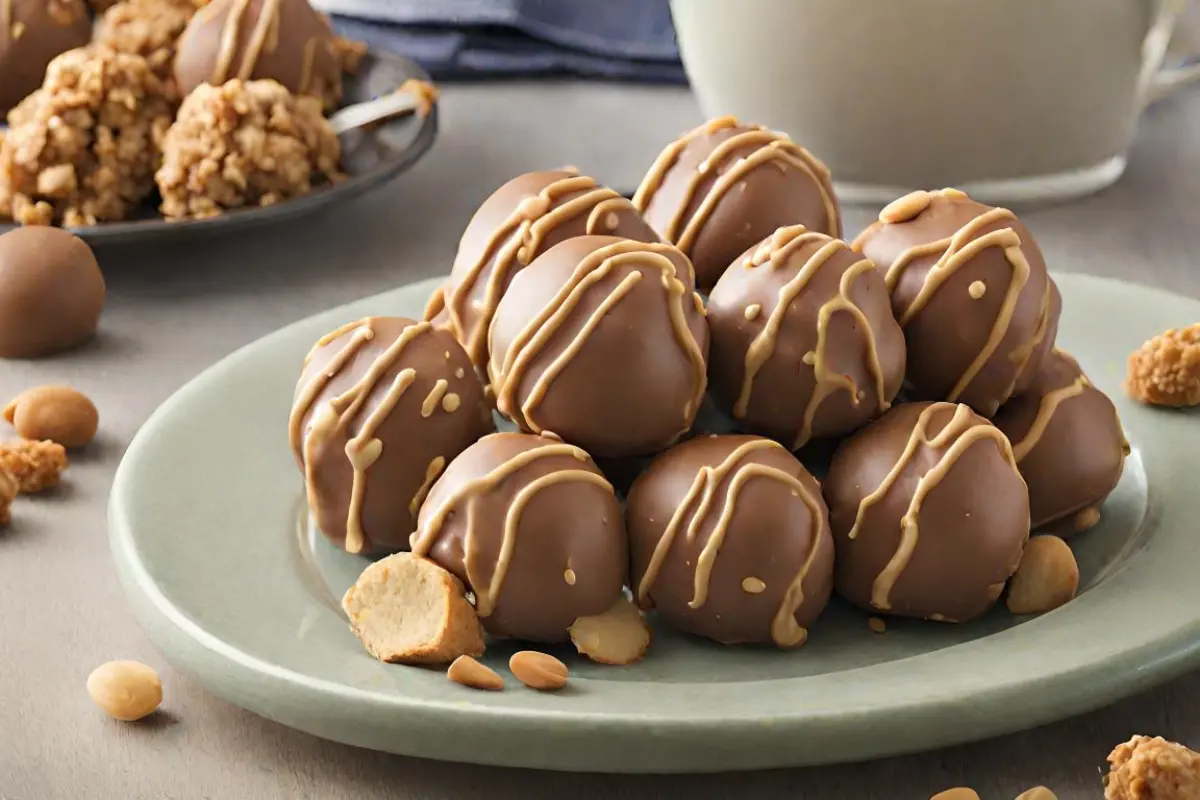Peanut butter balls: these delightful treats are more than just a sweet snack; they’re a journey through taste, tradition, and culinary creativity. In this comprehensive guide, we’ll explore everything from the classic recipe to innovative twists, nutritional insights, and even address some of the most common questions about these delectable morsels. Whether you’re a seasoned baker or a curious newbie, this article promises to unwrap the world of peanut butter balls, offering tips, tricks, and tasty tidbits along the way.
The Delightful World of Peanut Butter Balls
The Sweet Journey Through History and Popularity
Ah, peanut butter balls! These little spheres of joy have danced their way into our hearts and kitchens, becoming a staple in holiday spreads and cozy gatherings. But where did this journey begin? The history of peanut butter balls is as rich and layered as their delicious flavors.
Originating as a simple combination of peanut butter and chocolate, these treats have evolved over time. They’ve become a canvas for culinary artistry, allowing bakers to infuse various flavors and textures. From the classic Reese’s-inspired versions to more gourmet varieties featuring unique ingredients like sea salt or chili, peanut butter balls have secured their place in the pantheon of beloved desserts.
Their popularity isn’t just due to their irresistible taste; it’s also about accessibility. Peanut butter balls are wonderfully inclusive, offering variations that cater to different dietary needs and preferences. Whether you’re gluten-free, vegan, or just looking for a healthier sweet option, there’s a peanut butter ball recipe out there for you.
Moreover, these treats have become a symbol of festive joy. They’re often associated with holidays and special occasions, bringing people together in both making and savoring them. It’s not just about indulging in a sweet treat; it’s about creating memories and traditions that last a lifetime.
So, as we delve deeper into the world of peanut butter balls, let’s appreciate not just their flavors but also the stories and smiles they bring to our tables. Stay tuned as we explore the essential ingredients and variations that make these treats a universal favorite.
In the meantime, for those interested in the origins and evolution of peanut butter itself, a visit to The Peanut Institute’s history page offers a fascinating glimpse into its rich past.
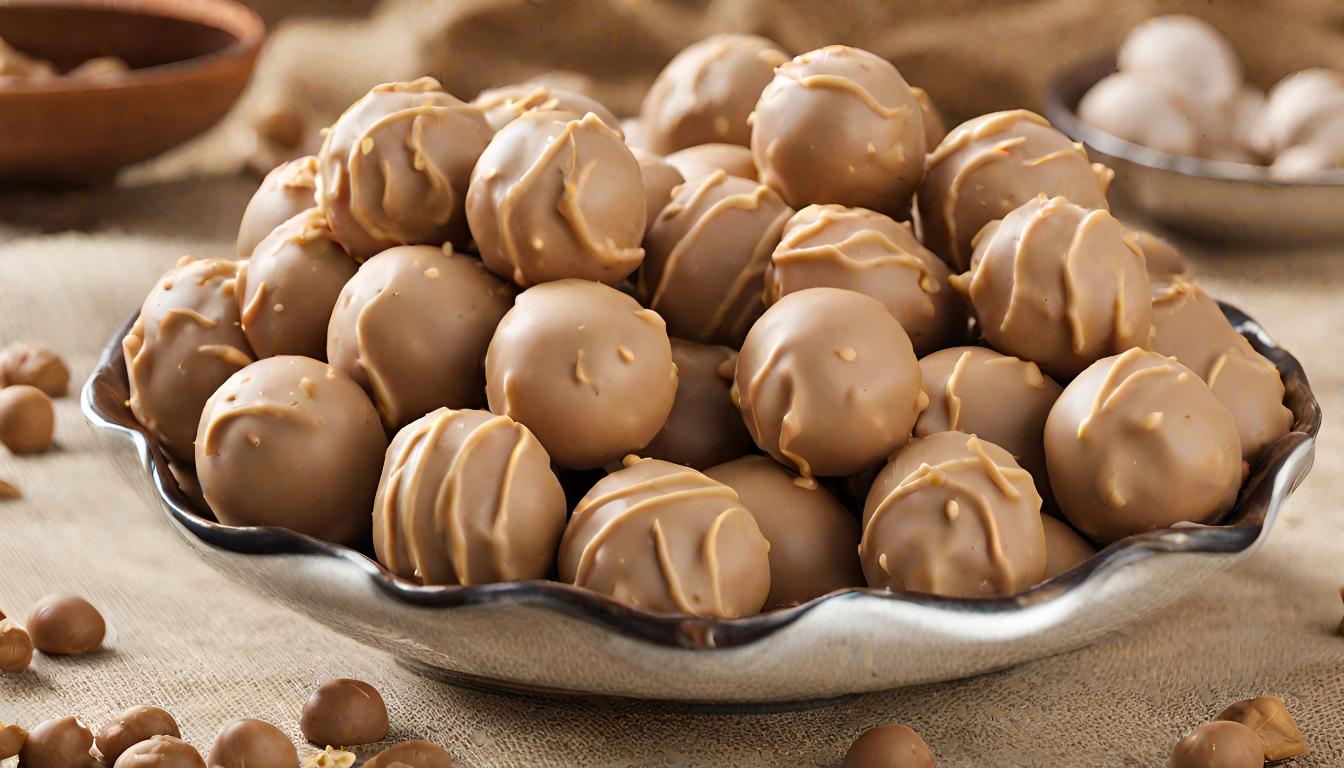
Crafting the Perfect Peanut Butter Ball
Key Ingredients for Classic Peanut Butter Balls
Creating the quintessential peanut butter ball is akin to conducting a symphony – it’s all about harmony and balance. The classic recipe is deceptively simple, yet each ingredient plays a crucial role in achieving that perfect blend of flavors and textures.
First and foremost, the star of the show: peanut butter. Creamy and rich, it forms the base of our confection. For a smoother texture, traditional creamy peanut butter is the go-to choice, but if you’re after a bit of crunch, feel free to opt for the chunky variety. Just steer clear of natural peanut butters for this recipe, as their oil separation can affect the consistency of your balls.
Next up, we have butter, which adds a luxurious richness and helps bind the mixture together. Unsalted butter is preferred for its neutral flavor, allowing the peanut butter to shine. However, if salted butter is all you have on hand, it can add an interesting flavor dimension.
The unsung hero of this ensemble is powdered sugar. It not only sweetens the mix but also contributes to the structure, ensuring your balls hold their shape. The amount can be adjusted based on your sweetness preference.
A dash of vanilla extract introduces a subtle depth of flavor, enhancing the overall taste profile without overpowering the primary ingredients.
Finally, the pièce de resistance: chocolate. Whether you choose dark, milk, or even white chocolate, it should be of good melting quality to ensure a smooth, glossy coating that envelops each peanut butter ball in a decadent shell.
Creative Variations and Flavor Twists
Now, for those who love a bit of culinary adventure, peanut butter balls are a playground of possibilities. Here are some ideas to get your creative juices flowing:
- Spice it up: Add a pinch of cinnamon or a dash of cayenne pepper to the peanut butter mixture for a warm, spicy kick.
- Go nuts: Mix in chopped nuts like almonds or pecans for added texture and nuttiness.
- Fruity fun: Incorporate dried fruits like cranberries or raisins for a sweet and tart contrast.
- Salted caramel twist: Drizzle salted caramel over the chocolate-coated balls for a gourmet touch.
- Coconut craze: Roll the balls in shredded coconut before or after dipping in chocolate for a tropical twist.
Remember, the beauty of peanut butter balls lies in their versatility. Don’t be afraid to experiment and put your unique spin on this classic treat.
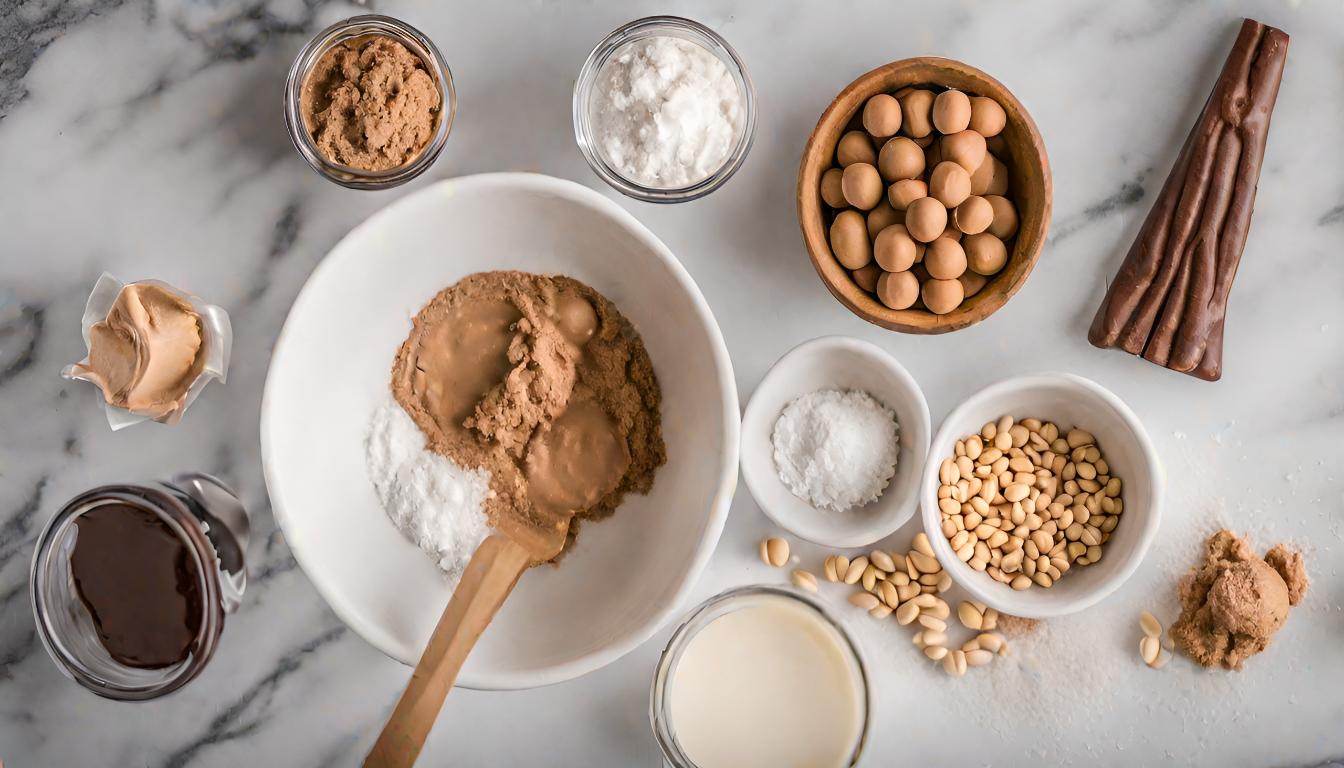
Mastering the Art of Peanut Butter Balls
Mixing and Shaping Techniques
The magic of making peanut butter balls lies in the simplicity of the process, yet a few tips and tricks can elevate your results from good to great. Let’s start with the mixing and shaping:
- The Perfect Mix: Begin by creaming together peanut butter and softened butter until smooth. Gradually add powdered sugar and a splash of vanilla, mixing until you achieve a firm yet pliable dough. It’s important not to overmix; just enough to ensure all ingredients are well combined.
- Shaping: Using a small scoop or spoon, portion out the mixture and roll it into balls. Aim for uniformity in size for consistent cooking and a professional look. If the mixture is too sticky, a little chill in the fridge can make it more manageable.
- Chilling Out: Once shaped, chill the balls in the refrigerator for at least an hour. This step is crucial as it firms them up, making the dipping process much smoother.
Dipping and Coating Strategies
Now comes the fun part – coating these beauties in chocolate!
- Melting Chocolate: Choose a high-quality chocolate for melting. You can use a double boiler or microwave, but ensure the chocolate is silky smooth and not too hot.
- The Dipping Process: Insert a toothpick or fork into a peanut butter ball and dip it into the melted chocolate. Gently tap off the excess and place it on parchment paper. For a traditional ‘buckeye’ look, leave a small portion of peanut butter exposed at the top.
- Setting the Stage: Once all balls are coated, let them set at room temperature or in the refrigerator. This will give them a nice, crisp chocolate shell.
- Finishing Touches: For an extra flair, drizzle with a contrasting chocolate, sprinkle with sea salt, or add a decorative element while the chocolate is still wet.
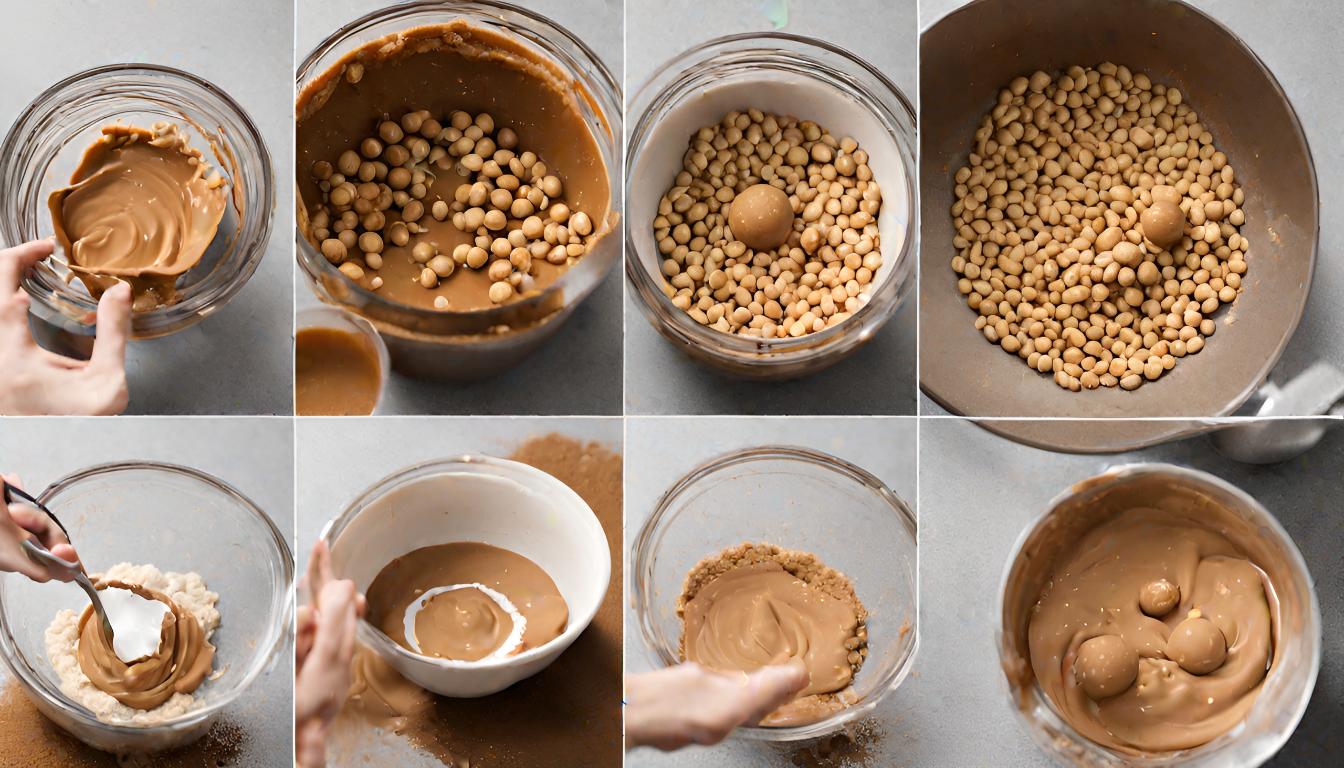
Understanding the Nutritional Profile of Peanut Butter Balls
Caloric Content and Health Benefits
Peanut butter balls, while undeniably a treat, do come with their own set of nutritional benefits. The primary ingredient, peanut butter, is a good source of protein and healthy fats, particularly monounsaturated fats, which are heart-healthy. It also contains essential vitamins and minerals like Vitamin E, magnesium, and potassium.
However, it’s important to be mindful of the caloric content. Peanut butter is calorie-dense, and when combined with sugar and chocolate, the calorie count of each ball can add up. Enjoying them in moderation is key to fitting them into a balanced diet.
Adapting the Recipe for Dietary Restrictions
One of the great things about peanut butter balls is their versatility in accommodating various dietary needs:
- For Gluten-Free Diets: Peanut butter balls are naturally gluten-free, making them a safe choice for those with gluten sensitivities or celiac disease. Just ensure all your ingredients, especially the chocolate, are certified gluten-free.
- For Vegan Diets: To make vegan peanut butter balls, use dairy-free chocolate and substitute the butter with a plant-based alternative. There are many vegan-friendly peanut butter brands available that can be used in this recipe.
- For Reduced Sugar Diets: If you’re watching your sugar intake, consider reducing the amount of powdered sugar and using a sugar-free chocolate coating. You can also explore natural sweeteners like stevia or monk fruit as alternatives.
- For Nut Allergies: While peanut butter is the star ingredient, those with nut allergies can substitute with sunflower seed butter or soy nut butter for a similar taste and texture.
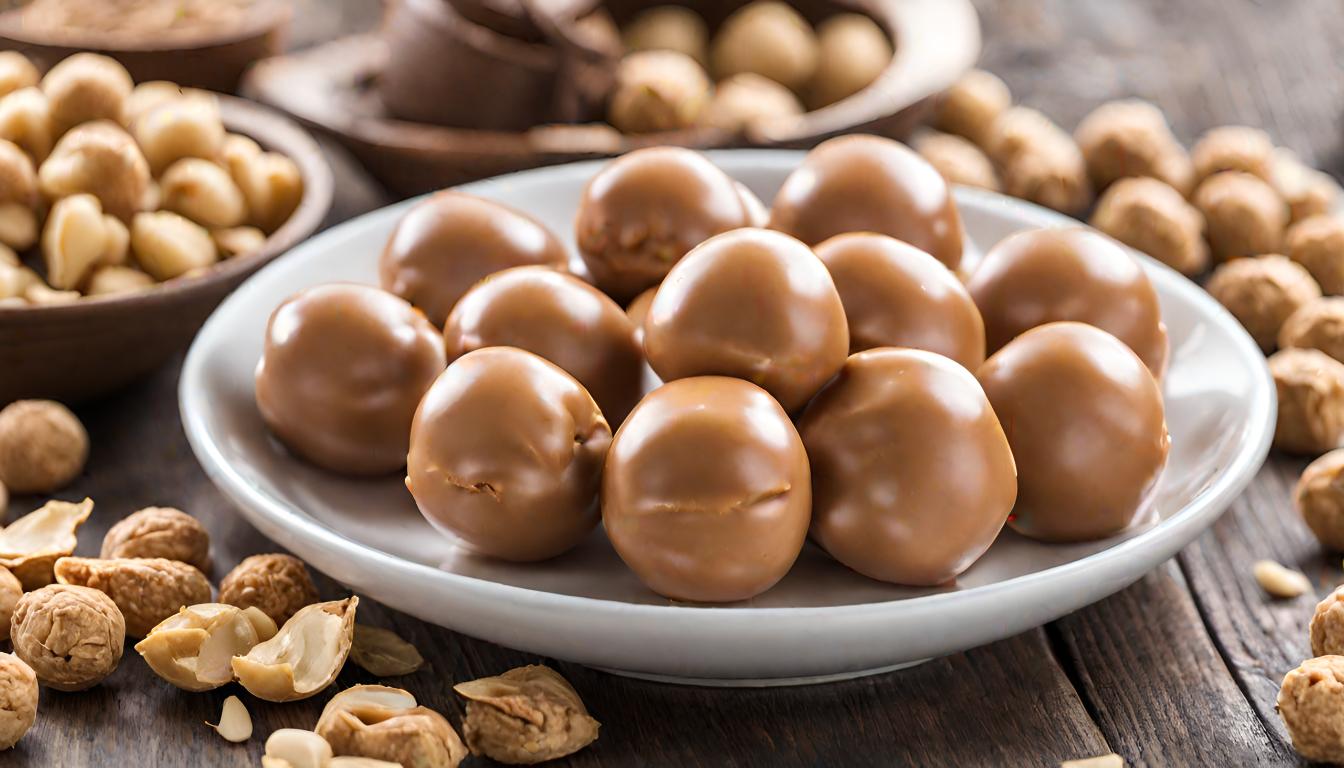
Preserving and Presenting Peanut Butter Balls
Best Practices for Storage
To keep your peanut butter balls tasting as fresh as the day you made them, proper storage is key. Here are some tips to ensure longevity and maintain quality:
- Refrigeration: Peanut butter balls should be stored in an airtight container in the refrigerator. This not only keeps them fresh but also maintains their firm texture. They can last up to two weeks when refrigerated.
- Freezing for Longevity: For longer storage, peanut butter balls can be frozen. Place them in a single layer on a baking sheet to freeze initially, and then transfer them to a freezer-safe container or bag. This prevents them from sticking together. They can last for several months in the freezer.
- Room Temperature: If you plan to consume them within a few days, storing them at room temperature in an airtight container is fine. Just make sure they’re kept in a cool, dry place.
Creative Serving Ideas for Various Occasions
Peanut butter balls are versatile and can be dressed up or down for any event:
- Holiday Gifting: Pack them in festive tins or boxes for a homemade holiday gift. Add a decorative ribbon and a tag for a personal touch.
- Party Platters: Arrange them on a platter with a variety of other sweets and chocolates for an eye-catching dessert spread.
- After-Dinner Treats: Serve them with coffee or tea as a simple yet elegant after-dinner treat. A dusting of cocoa powder or a drizzle of white chocolate can add a gourmet touch.
- Kids’ Parties: Dip them in colored chocolate or decorate with sprinkles to make them fun and appealing for children’s parties.
- Wedding Favors: Miniature peanut butter balls in small, elegant boxes make delightful wedding favors. They’re a sweet way to thank guests for sharing in your special day.
Addressing Common Queries About Peanut Butter Balls
Top Frequently Asked Questions
Peanut butter balls, with their simple recipe and delicious taste, often raise a few questions. Here, we address some of the most common inquiries to help you perfect your peanut butter ball experience.
- Can I use natural peanut butter in my recipe?
- While natural peanut butter can be used, it may affect the texture due to its oil separation. For best results, stick with traditional creamy or crunchy peanut butter.
- How can I prevent the chocolate from cracking after dipping?
- To avoid cracking, ensure the peanut butter balls aren’t too cold when dipping them in chocolate. Also, using chocolate that’s been tempered or mixed with a bit of coconut oil can help create a smoother coating.
- Is there a way to make peanut butter balls healthier?
- Absolutely! You can reduce the sugar content, use dark chocolate for coating, and even add in ingredients like flaxseed or protein powder for an extra nutritional boost.
- Can I make these treats nut-free for allergy concerns?
- Yes, for a nut-free version, substitute peanut butter with sunflower seed butter or soy nut butter. Always check the labels of other ingredients to ensure they’re nut-free as well.
- How do I store peanut butter balls, and how long will they last?
- Store them in an airtight container in the refrigerator for up to two weeks, or freeze them for longer storage. If kept at room temperature, consume them within a few days.

Conclusion
In wrapping up our exploration of peanut butter balls, we’ve journeyed through their delightful world, from crafting the perfect ball to understanding their nutritional profile. As you relish the sweet and nutty goodness of these treats, remember that the world of homemade desserts is vast and full of flavors waiting to be explored. Whether you’re in the mood for the creamy and fruity layers of a Lemon Blueberry Cheesecake or the savory, comforting taste of Vesuvio Potatoes, Flavortasty.com has a plethora of recipes to satisfy your culinary curiosities. Happy cooking and savoring!

